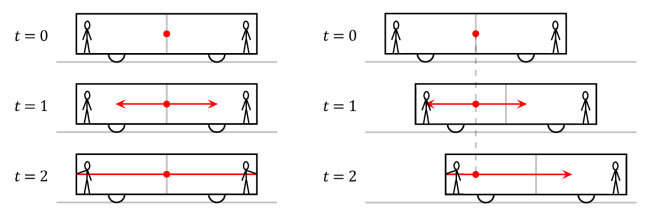

Science and Religion - a matter of honesty and respect
I presented a talk at our astronomy club in January about how Clair Cameron Patterson, an Iowan, accurately measured the
age of the solar system at 4.56 billion years, publishing his result in 1956. Although I was raised in an evangelical
church which taught young earth creationism, forty seven years later I find that I am somewhat surprised that 38% of
Americans still believe that the earth is 6,000 to 10,000 years old. Thirty eight percent! We could dismiss one or two
percent, but this group is more than one third of the population.
Nevertheless, it seems to me that there is no a priori reason that science and religion should be in irreconcilable conflict. All that is needed for harmonious co-existence is respect and honesty.
First of all, we should respect that for these folks, this is a matter of faith. This is a strongly held religious belief and they are not likely to change what they believe. They do not deserve to be belittled for it.
Next, we need to be honest about science. Consider how we do science. We observe some phenomenon and then invent an explanation. Our explanation must be falsifiable. That is, we must be able to use our explanation to make testable predictions. And if we run an experiment and the predictions fail, then we have proven our explanation false. Conversely, if we run every possible and conceivable experiment, under all possible conditions until the end of time, then we might be able to claim that we have proven something.
For example, Newtonian or classical mechanics ruled the day for 2 centuries and gave us the industrial revolution. The equations were elegant and the results transformed our world and vastly improved the condition of humanity. The science was expansive and convergent. Certainly, the results were self-evident.

Then this fool, Einstein, came along and said, "No, no, no! You've made a false assumption. You have assumed that you can apply a universal Cartesian coordinate system to all space and time - simultaneously. Heck, simultaneity doesn't even exist. Actually, you have to set an individual coordinate system at every point in space-time. And this gravity stuff isn't a force at all. Instead, it's the curvature of space-time in the vicinity of mass."


One solar eclipse later there was a star out of place, and classical mechanics had been proven wrong. If you had asked scientists whether classical mechanics had been proven, at the turn of the 20th century, many would have answered a resounding "Yes!" It had transformed our world, after all.
So, we must be honest about what science is and what it is not. We really can't prove things with science. We can accumulate evidence, but that isn't actually proof.
But young earth creationists certainly have a bias. They are certain that the earth is only a few thousand years old. No real scientists have any biases, do they? Of course, they do. That is human. In fact, the issue of biases is so pervasive, that we have a special way of dealing with it in science - peer review.
The peer review process is like building a shark cage. If your work has biases, then some links in the cage will be weak. You don't want that, because you are going to have to put your good reputation inside of that cage, along with a couple hundred pounds of bloody steaks. Then you are going to dip it into shark infested waters, full of graduate students; many of whom have tiny little minds that will never entertain anything like an original thought. Yet, they will get the chance to shred your reputation to pieces. It helps keep scientists honest.
But, young earth creationists approach science with faith in a preconceived notion. So do string theorists and those who work on super-symmetry. String theorists have no evidence supporting their work and they have yet to make one testable prediction. But, they have faith. They believe that science must be elegant. It must have beautiful equations, like Maxwell's equations. Yet, the standard model is not beautiful.
The standard model has 19 free parameters which may only be determined by measuring each of them. Knowing 18 of them does not give you the 19th. You can't determine any of them from first principles. And the quantum equations - they can only be solved numerically. Worse yet, you have to perform some hand-waving voodoo on them, called renormalization in which you set some stuff equal to one, in order to cast out infinities. They give you correct answers. But they are ugly! Then there is gravity. You can't renormalize those equations. There is no way to get rid of the infinities. And no one has figured out a way to combine the quantum theories with a theory of gravity.
So, string theorists have faith that an elegant version of physics exists. They are among the brightest and most respected people on the planet. But they are operating on faith.
Finally, we must expect honesty in return. The evidence for the earth being 4.56 billion years old converges from diverse lines of study including geology, radiometry, astronomy, and many others. It is significant. Some young earth creationists believe that the earth was created in situ, that it was created "old". I can't prove that didn't happen. Others believe that the science is wrong. Those who believe such are not so different from string theorists, so long as they do the science and honestly publish their results. Look for the chinks in the armor. In any case, such work will increase human knowledge.
But, we are not going to accept logical fallacies and we are not going to tolerate suppression of evidence. Religious folks who approach science that way are probably just lacking faith.